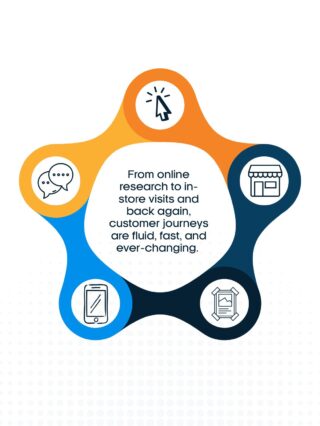Google’s new AI Mode marks a major shift in how users experience search. Unlike features that surface AI answers directly in the search engine results page (SERP), AI Mode takes users into a dedicated, separate page where AI-generated results and workflows become the focus. This change alters the traditional search journey, pulling users away from the main results and into an AI-driven environment. For SEO professionals, the implications are significant: understanding how content is selected, summarized, and surfaced in AI Mode will be critical as traffic patterns and engagement metrics begin to shift.
What is Google AI Mode?
AI Mode is Google’s conversational AI feature, similar to ChatGPT. It appears as a tab on the search results page, and when selected, users are redirected from the standard search interface to a dedicated AI Mode page.
Launched publicly on May 20, 2025, and rolled out more widely in June, this feature is currently optional with advertisers closely monitoring updates into the end of 2025 and beyond. Users must opt in through their Google accounts to access it. While no official timeline has been announced, Google has expressed its intention for the feature to eventually become a standard part of its search experience.
How Could AI Mode Impact Organic Search Traffic?
It’s no secret that the world of SEO is in flux. It’s possible that AI Mode could significantly reshape how users interact with search results by giving users another outlet for more conversational search.
As a result of shifts in consumer behavior, brands should keep an eye out for the following impacts:
- Traffic Impact: If users find the AI Mode responses helpful and trustworthy, they may choose not to click through to the source links, potentially resulting in fewer clicks.
- Ranking Impact: Rankings should remain unaffected, as the sources referenced in AI Mode responses are not part of Google’s traditional ranking system.
- Content Accuracy: Similar to AI Overviews, the responses generated in AI Mode may occasionally include inaccurate information or language.
How Will AI Mode Reshape Paid Search Results?
Google integrates paid search results into AI Mode, similar to how it appears in AI Overviews. These ads can be displayed above, below, or embedded within the AI-generated content. While placement varies, most ads currently appear embedded and are limited to select search queries.
This shift may influence the click-through rate (CTR) of paid search ads, especially if users engage primarily with the AI-generated content and bypass both organic and sponsored listings.
With AI Mode’s conversational nature, there’s a growing need to adapt keyword strategies in paid search campaigns. Designed to support longer, more complex queries and follow-up questions, AI Mode requires a more nuanced approach. Butler/Till’s Paid Search Team is actively monitoring these developments across client campaigns and plays a key role in navigating this evolving landscape.
What can you do to offset the impact of AI Mode?
While Google has not released official documentation detailing how sources are selected for AI Mode, applying the same SEO best practices recommended for AI Overviews, such as creating unique, helpful, and easy-to-read content, may improve your chances of being featured.
At the same time, AI Mode shifts users away from the familiar SERP and into a separate, AI-driven results page, reducing visibility for traditional listings. To offset this impact, brands should focus on these additional strategies that strengthen authority, improve content discoverability, and adapt to how AI interprets and delivers information:
- Strengthen Entity-Based SEO: Make sure your brand, products, and services are recognized as authoritative entities. Use structured data, schema markup, and consistent brand mentions across platforms, so Google’s AI has clean and reliable inputs when building its responses.
- Optimize for Conversational Queries: AI Mode encourages users to refine and interact with queries in their natural language. Align your content with question-based searches and conversational phrasing so it fits naturally into the AI’s response flow.
- Build Multi-Channel Visibility: If traffic siphons away from the SERP, your brand should still be discoverable elsewhere. Strengthen visibility across YouTube, LinkedIn, industry directories, and niche platforms where AI may pull supplemental information.
- Prioritize Authoritative, In-Depth Content: AI Mode surfaces content that provides depth and context. Long-form, expert-driven resources are more likely to be referenced than shallow, keyword-heavy pages.
- Track Traffic Sources Separately: Adjust analytics to distinguish between SERP-driven clicks and traffic potentially influenced by AI Mode. This will help you identify gaps early and refine your strategy.
By shifting focus from pure rankings to authority, context, and adaptability, brands can stay relevant even as AI Mode changes the flow of search traffic.
Adapting to AI Mode: Final Thoughts
AI Mode is changing the search journey—pulling users away from the SERP, reducing organic visibility, and altering how brands capture attention online.
While this shift creates new challenges, it also presents opportunities to rethink strategy. By strengthening entity-based SEO, creating authoritative content, and building visibility across multiple channels, Butler/Till is prepared to help our clients adapt and thrive in an AI-driven search environment.
Contributors: Candace Kassman, Katie Cannon




